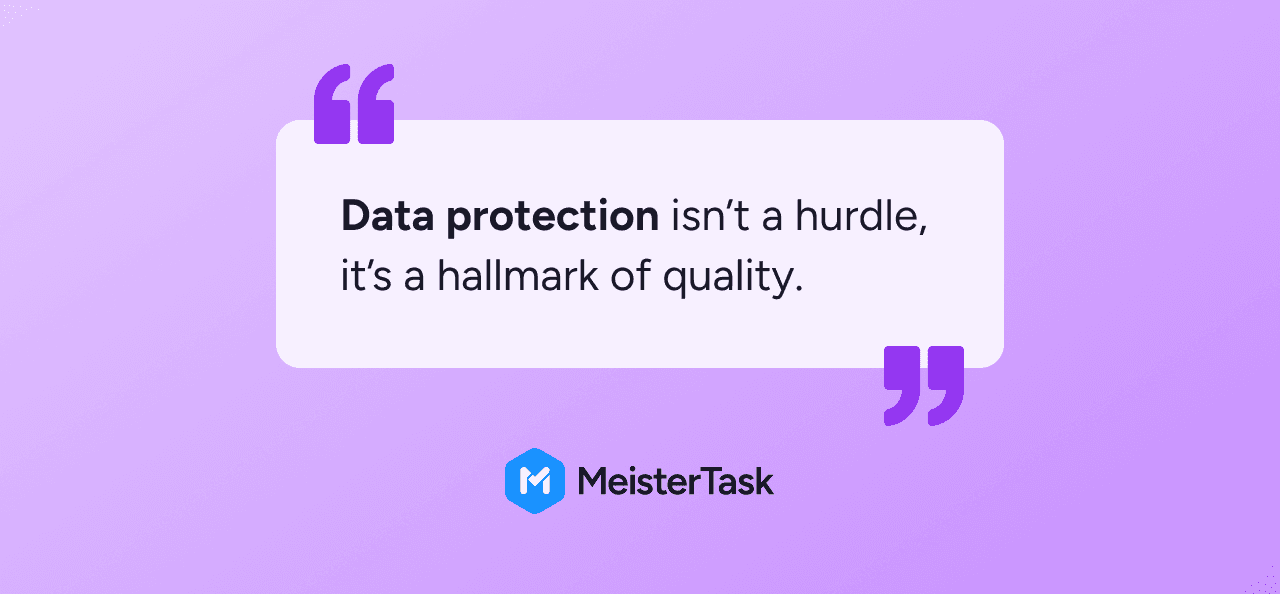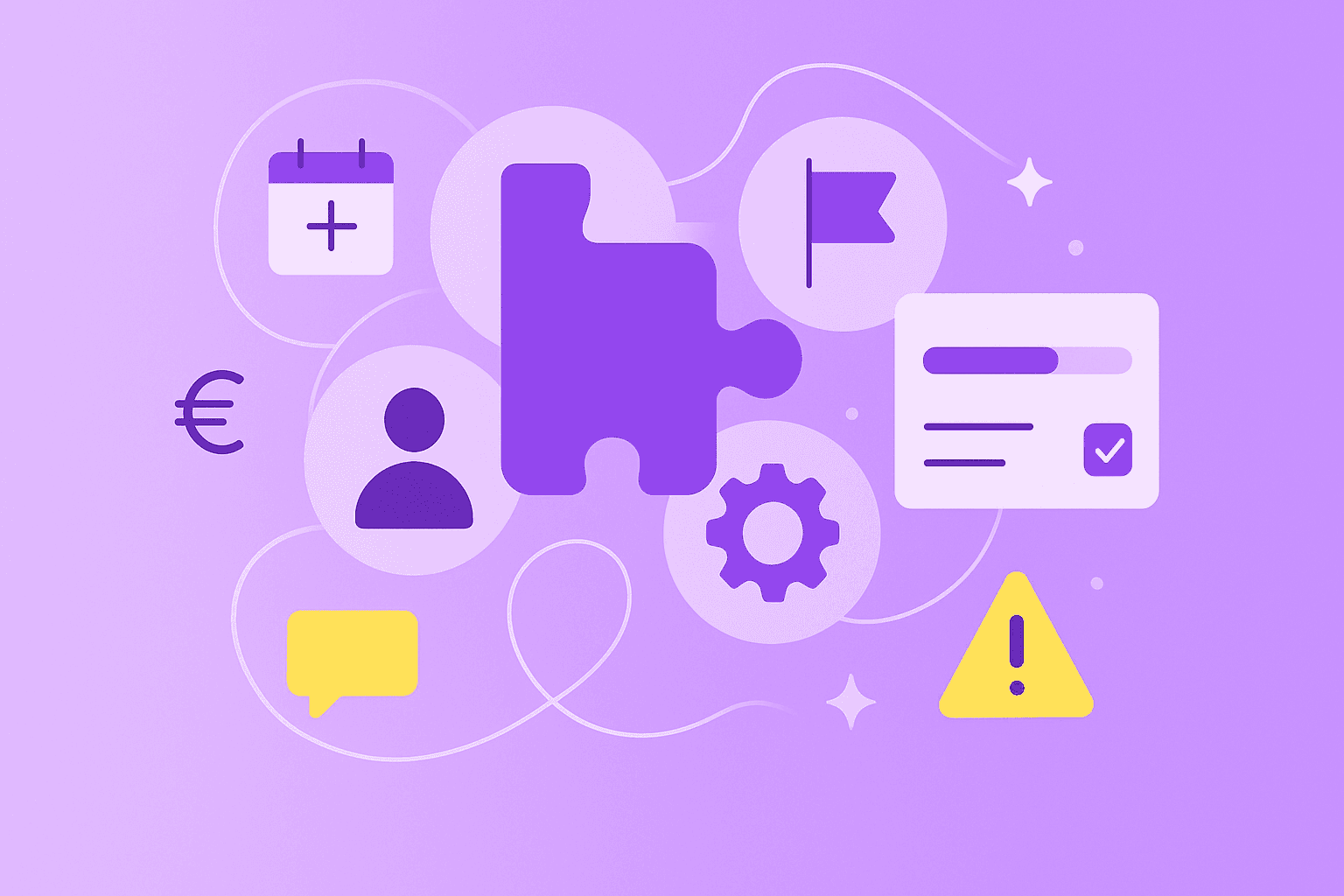Digital transformation in SMEs: 7 pitfalls and how successful companies avoid them
Digital transformation is considered the key to future success for German businesses. Yet, many small and medium-sized enterprises (SMEs) struggle with digitalization, even though they recognize its importance. Studies reveal that while nearly all SMEs see digital transformation as crucial, actual progress often lags behind expectations.
Digitalization in SMEs involves more than just implementing new software. It requires a fundamental shift in business processes, workflows, and sometimes even business models through digital technologies. With limited resources and established structures, SMEs face unique challenges on this journey.
This article highlights the seven most common pitfalls on the path to successful digital transformation—and reveals practical strategies that leading SMEs use to overcome these hurdles.
Why many SMEs miss their digitalization goals
Most digitalization projects fail due to similar fundamental problems. Although every company is unique, the same patterns emerge across industries. The main causes can be summarized in three categories:
Lack of overall strategy: Companies digitalize individual areas without looking at the big picture
Limited resources: Too little budget, time, and qualified employees for comprehensive projects
Overwhelmed by complexity: The multitude of possibilities makes the right decision difficult
Successful digitalization requires more than technology. It's about a well-thought-out change process that equally considers people, processes, and technology.
Pitfall 1: unclear strategy and missing priorities
Imagine renovating your house without a plan – a new window here, a modern heating system there. In the end, nothing fits together. This is exactly what happens with many digitalization projects. Companies start without a clear vision and concrete goals. The result: a lot of money invested, little visible improvement.
1. External trends not recognized
While you're internally optimizing your processes, your competitors might already be developing completely new business models. Those who only look inward miss important market changes. An example: While traditional retailers were modernizing their cash register systems, others were already building successful online marketplaces.
Here's how to stay on the pulse of the times:
Competitive monitoring: Regularly analyze what your competition is doing
Industry events: Exchange ideas with other entrepreneurs
Customer feedback: Listen carefully to what your customers want
Partnerships: Collaborate with universities or research institutions
2. Aimless collection of tools
"We need a tool like that too!" – this phrase has led many companies astray. The IT department uses one project management tool, sales uses another, and production has yet another solution. None of the systems communicate with each other. Employees spend more time switching between programs than doing their actual work.
3. Lack of measurable goals
"Becoming more digital" is not a goal – it's a wish. Successful projects need concrete, measurable targets. Only then can you track progress and make corrections when necessary.
Vague idea
Concrete goal
"Becoming more modern"
"Reduce processing time for customer inquiries by 30%"
"Working more digitally"
"Halve paper consumption through digital document management"
"Becoming more efficient"
"Shorten production lead time from 5 to 3 days"
Pitfall 2: insufficient employee involvement
Your employees are the key to success for any digitalization. Yet they're often only informed after the decision has already been made. The new software is presented, a brief training is conducted – and then people wonder about the resistance.
Training instead of lip service
A PowerPoint presentation doesn't make a training session. People need time to understand and internalize new ways of working. Especially when they've worked differently for years.
Successful continuing education works like this:
Schedule learning time: Block fixed times for training in the calendar
Create practical relevance: Practice with real examples from daily work
Learn from each other: Encourage exchange between colleagues
Provide long-term support: Offer assistance even weeks after implementation
Appreciating know-how in the team
There are probably already digital pioneers in your team – you just don't know who they are yet. Often they're not the IT experts, but employees from completely different areas who are tech-enthusiastic in their private lives. These "Digital Champions" can build bridges between technology and team.
Pitfall 3: tool faith instead of process focus
"This software will solve all our problems!" – If you believe that, you'll be disappointed. Tools are instruments, not miracle cures. A chaotic process just becomes chaotically faster through digitalization.

1. Symptoms of pure tool fixation
Do you recognize yourself? Then you might be suffering from tool fixation:
You have multiple programs with similar functions
Expensive software is barely used
Every few years you switch to a new system
Your work methods adapt to the software – not the other way around
2. Importance of clear processes
Before you digitalize, optimize. Map out your current workflows. Where do waiting times occur? Which steps are unnecessary? Only when the process is right does digitalization make sense.
A practical example: With visual Kanban boards, you can transparently display workflows. Tools like MeisterTask help improve processes step by step – without immediately turning the entire company upside down.
Pitfall 4: organizational overwhelm from new processes
New digital processes often bring chaos instead of clarity. Suddenly no one knows exactly who is responsible for what. Old and new ways of working exist in parallel. The result: duplicate work, frustration, and declining work results.
1. Minimize overlapping responsibilities
With digitalization, clear boundaries often blur. Who maintains customer data in the new CRM system – sales or marketing? Who decides on technical problems? Without clear answers, conflicts and gaps in responsibility arise.
2. Establish sensible project leadership
Digitalization projects need someone at the helm. This person shouldn't lead the project "on the side," but should be able to focus fully on it.
What makes good project leadership:
Decision-making authority: Can implement things without constantly having to ask
Technical competence: Understands both technology and business processes
Communication skills: Brings different departments to the table
Experience with change: Knows how to win people over to new things
Pitfall 5: cost pressure and investment uncertainty
"What does all this cost?" – The fear of high expenses without guaranteed success paralyzes. Yet hesitation often leads to even higher costs when the connection is missed.
Digitalization doesn't have to be expensive. With the right strategy, you keep costs under control:
Start small: Begin with a manageable pilot project
Use cloud: Flexible subscriptions instead of high one-time investments
Seek quick wins: Prioritize projects with short-term return on investment
Check funding: Programs like "Digital Jetzt" financially support medium-sized businesses
Pitfall 6: skills shortage and lack of continuing education
IT specialists are rare and expensive. Many medium-sized companies can't compete with the salaries of large corporations. At the same time, the potential in their own employees is often overlooked.
Recruitment paths for digital competencies
Get creative in your search for digital know-how:
University cooperations: Offer internships and thesis projects
Promote internal talent: Retrain motivated employees
Flexible work models: Attract specialists through part-time or remote work
Use networks: Share experts with other regional companies
Pitfall 7: data protection and regulatory hurdles
GDPR is complex, no question. Many companies are so unsettled that they'd rather not digitalize anything than do something wrong. This fear is understandable but surmountable.
EU requirements and industry-specific guidelines

Data protection is not an obstacle, but a quality feature. Customers appreciate careful handling of their data. Those who plan in compliance with data protection from the beginning save themselves expensive adjustments later.
An advantage for German companies: European providers like MeisterTask were developed from the ground up according to EU standards. They offer legal certainty without complicated adjustments.
How successful companies master digitalization
The good news: All mentioned stumbling blocks can be overcome. Successful medium-sized companies demonstrate this. They've understood that digitalization is a marathon, not a sprint.
The most important success factors:
Clear vision: Knowing where the journey should lead
Take people along: Make employees participants
Processes first: First optimize, then digitalize
Step by step: Better steady small progress than big leaps
Learn from mistakes: Regularly check and adjust
With thoughtful planning and the right tools, digital transformation will succeed for your company too.
MeisterTask supports you in taking first steps – without immediately turning everything upside down.
